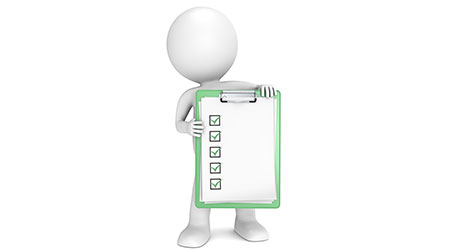Understanding the LEED Rating System
This handy primer for the LEED rating system can help you target the categories and credits that'll help you earn the highest rating.
OTHER PARTS OF THIS ARTICLEPt. 1: This Page
Leadership in Energy and Environmental Design, or LEED, is a certification program created by the U.S. Green Building Council that evaluates the environmental performance of a facility and encourages sustainable design and building practices. Certification is granted using a point system based on predetermined criteria. A structure can earn different degrees of certification based on points earned:
• LEED Certified: 40-49 points earned
• LEED Silver: 50-59 points earned
• LEED Gold: 60-79 points earned
• LEED Platinum: 80+ points earned
The LEED scorecard has seven sections in which a building can earn points:
Site Selection
Start with site selection. Choosing a compliant sustainable site is 100 percent in the control of the owner and determines much of what you can accomplish. Things like access to public transportation, storm water design, light pollution reduction, and bicycle storage cannot be altered by contractors, but will play a large role in your score.
Water Efficiency
Water is becoming an increasing scarce resource, so efficient water use earns major points. The four best ways to receive high marks in water efficiency are through water-efficient landscaping, innovative waste water technology, gray water recycling, and use of low-flow fixtures.
Energy and Atmosphere
To get points in the energy and atmosphere section, you must optimize your facility’s energy performance. The best way to do this is through modeling energy usage. The design team and engineers should model usage for your typical climate and building design to figure how it will impact your heating and cooling needs. Designers can then alter the building to offset those needs. Contractors provide pricing and constructability feedback on design modifications to make sure you get the most bang for your buck.
Use of renewable energy is also scored under this section. Solar power is one of the easier sustainable features to install and use, and will only to continue to gain more traction. It is just a matter of investing in the equipment.
Materials and Resources
Sustainably sourcing and material recycling earn a lot of points in this section. It is preferable to use regionally-produced materials because shippers use less fossil fuels to transport to the site, which also cuts down shipping costs for you. You can also recycle material found on the job site, such as repurposing concrete from the demolition for gravel or using cleared trees for finishes inside or around the building. The Engineered Biosciences Building used felled trees from the project site for wood finishes inside the building.
Indoor Environmental Quality
Indoor environment quality pertains to the comfort of the space, considering the temperature, air flow, humidity and pollutants. Especially in a lab space, the indoor air maintenance requires a properly equipped exhaust system that will remove pollutants and control air quality. Best practice for indoor environmental quality is a dedicated system for filtering outdoor air. This section also assesses how air is distributed in the space. LEED scoring will provide more points to buildings that invest in diffusion technologies, which thoughtfully distribute air for comfort and energy use.
Innovation and Design Process
LEED certification requires collaboration early in design. The whole team, including owners, operations and maintenance staff, facility groups, and commissioning agents, should be involved in setting priorities. This level of collaboration ensures all parties’ needs are met. For example, Georgia Tech’s maintenance crew uses green cleaning products, like ionized water, in all buildings. Ionized water damages stainless steel finishes. Communication with the maintenance operators ensured that finishes were selected that would not be damaged by green cleaning products.
Regional Priority Credits
There are different priorities for sustainability in different regions. For example, in the Southwest, saving water is prioritized as much as possible because it is a scare resource in the region. This section rewards buildings that include sustainable features for regional priorities. You can look up what regional credits are available in your region on LEED’s Regional Priority Credit webpage.
Ben Watkins is vice president of operations in the Atlanta office of McCarthy Building Companies, contractor for the Engineered Biosystems Building.
Email comments to edward.sullivan@tradepress.com.
Related Topics:












